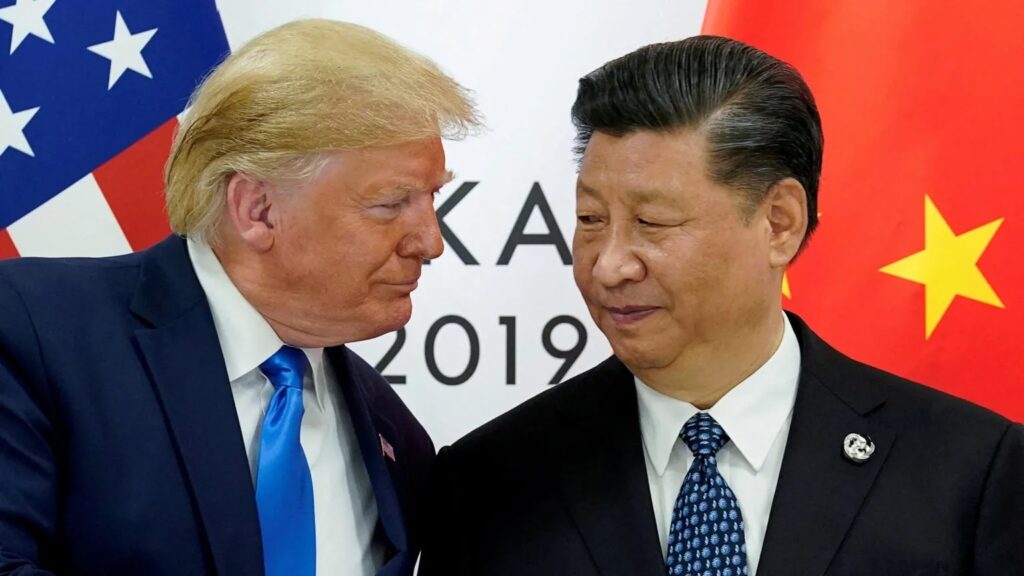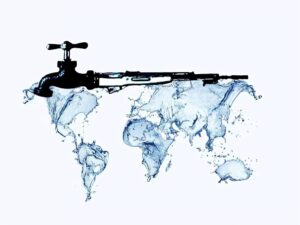The Future of the Global Order: Are We Witnessing Multipolarity or Nonpolar Chaos?

In 2010, during the annual meeting of the World Economic Forum in Davos, Switzerland, I had the personal fortune to attend one of the most important sessions of the forum, which brought together the "elite of the global elite" in the economic, political, and intellectual fields. The session was an attempt to answer a complex, visionary question: Are we heading towards a bipolar, multipolar, or poleless world? Despite the strangeness of the latter option, it was defended, along with the weaker possibility of continued American hegemony as the sole pole in the world. Now, more than fifteen years later, the question remains valid in light of the developments the world is witnessing, and an attempt to update the answers to the "Davos" question remains necessary.
After nearly three decades of US-dominated unipolarity following the collapse of the Soviet Union, the global geopolitical landscape today appears more uncertain and complex. This unipolarity has clearly eroded, and a clear bipolarity between the United States and China as two major, exclusively competing powers, similar to the Cold War, has not emerged on the horizon. This development presents us with a fundamental question about the shape of the future international order, specifically two main possibilities, from which four possible scenarios for the future of the world over the next decade branch out: The first is multipolar world In different forms of polarity, the second is A world without poles It is dominated by chaos and competing interests.
The Decline of American Unipolarity: Causes and Indicators
To understand the current transformations, it is essential to grasp the reasons behind the decline of American unipolarity. After reaching the height of its power in the 1990s, several factors began to undermine this hegemony. Internally, the United States faced economic and social challenges, in addition to a waning consensus regarding its global role, especially after the wars in Iraq and Afghanistan, which drained its human and material resources. Externally, emerging powers emerged, demanding a greater position on the international stage. China's rapid economic growth and its growing military might have made it a real competitor to the United States in many areas, from technology to trade. At the same time, Russia, under the leadership of Vladimir Putin, has regained some of its former influence, challenging the liberal order spearheaded by Washington, particularly in its geographic vicinity and in conflict zones such as Syria and Ukraine. The roles of other regional powers, such as India, Brazil, Morocco, and Turkey, have also strengthened, no longer accepting the Western model as the sole option and seeking to assert their own interests within their spheres of influence. These combined indicators clearly indicate that the era of the “sole superpower” is over, and that the world is moving towards a more complex configuration.
First possibility: a multipolar world
It means concept Multipolarity Global power is distributed among several powerful states or blocs, each capable of exerting significant influence on international affairs. This diversity varies in degree and type, leading us to three main scenarios within this possibility.
Scenario 1: A multipolar, equal world (Classical Multipolarity)
This scenario assumes a small number of great powers with broad global influence and broadly equal military, economic, and technological capabilities. The most prominent candidates for this role are the United States, China, Russia, and perhaps the European Union and India in the long term.
- Justifications for the theory: Proponents of this theory believe that a balance of equal powers can lead to greater stability in the international system. Each power will be cautious about taking steps that might provoke another, reducing the chances of major conflicts. Flexible and shifting alliances will form based on momentary shared interests, rather than rigid ideological alliances. For example, the United States and China may cooperate on issues such as climate change or counterterrorism, while competing over trade and regional influence. This balance will force powers to seek diplomatic solutions and settle disputes through negotiation.
- Likely outcomes for the next decade: Although this scenario is attractive in terms of theoretical stability, its full realization over the next decade appears difficult. The power gap between the United States and China on the one hand, and the rest of the powers on the other, remains large. Russia, despite its military strength, suffers from economic weakness that limits its global influence. The European Union faces internal challenges related to the unity and coordination of foreign and defense policies. India, although a rising power, still needs more time to consolidate its position as a global power equal to the rest of the world. Thus, we may witness an approach to this scenario, but with disparities still existing between the poles.
Scenario 2: A multipolar world of varying sizes and influence
This is the most likely scenario in the foreseeable future, and is the one described in the proposal's initial hypothesis. This scenario assumes the following:
- major global poles: Like the United States and China, which have the ability to influence all over the world.
- Mid-continental poles: Powers that are influential at the level of their continent or major regions, such as the European Union (as a bloc), India, Russia, Brazil, and perhaps Japan.
- small regional poles: Influential powers within specific geographic regions, such as Türkiye in the Middle East and Central Asia, Israel in the Middle East, Morocco (in competition with South Africa) in Africa, and Iran in the Gulf region.
- Justifications for the theory: This theory is justified by the current reality of the distribution of power. States are not equal in their capabilities, but they all seek to maximize their interests. This distribution of power will lead to a complex web of interactions. Major powers will continue to have the final say on major global issues, but they will be forced to coordinate with continental and regional powers to maintain stability and resolve conflicts. Transnational and transnational alliances will form, where a regional power may cooperate with a global power to balance another regional power or to advance its economic interests. For example, Turkey may cooperate with China on infrastructure projects, or with Russia on security issues, while maintaining its relations with the United States and the European Union.
- Likely outcomes for the next decade: This scenario is most likely to materialize over the next decade. We will see increased competition between the United States and China, but they will have to contend with the rise of other powers. Regional conflicts may become more complex as multiple actors with divergent goals and interests intervene. International institutions, such as the United Nations and the Security Council, will face pressure to adapt their structures to reflect this new balance of power. We may also see an increase in multilateral diplomacy, as countries seek to build flexible coalitions around specific issues rather than engage in permanent alliances. The key challenge will be managing this multiplicity to avoid conflict and ensure continued cooperation on pressing global issues such as climate change and pandemics.
Scenario 3: A Mixed Bipolar World (Bipolarity with Spheres of Influence)
Although the chances of a traditional US-China bipolarity are diminishing, it is possible that matters will evolve towards a “mixed” or “emerging” bipolarity, in which the United States and China are primarily competitors, but allow for degrees of autonomy or spheres of influence for other allied or dependent powers.
- Justifications for the theory: This theory is based on the idea that the rivalry between Washington and Beijing is too deep to constitute a truly multipolar system. Both possess unprecedented economic, military, and technological power, making them the more important players. Instead of a “zero-sum conflict,” however, the two sides may implicitly or explicitly agree to divide the world into zones of influence, with some regional powers allowed to act as their “proxies” in certain areas. China may seek to enhance its influence in Asia and Africa through the Belt and Road Initiative and investments, while the United States maintains its traditional alliances in Europe and parts of Asia.
- Likely outcomes for the next decade: We may witness an escalation of tensions between the United States and China, with each side seeking to draw other countries into its orbit. Smaller countries may be forced to choose between the two blocs, or attempt to play on the contradictions between them. This scenario could lead to an intensification of the arms race, particularly in the technological and military fields, and an increase in proxy wars in contested areas of influence. The challenge here will be how to manage this competition to avoid direct confrontation, which would be disastrous for all. Although this scenario does not seem entirely equal, the significant concentration of power in two major poles with expanding influence remains a real possibility.
The second possibility: a world without poles (Anarchy and Power Politics)
This scenario is the most worrying, as it assumes the collapse of the international order based on laws and institutions, replaced by chaos governed by the “law of the jungle” and the unchecked pursuit of powers.
Scenario Four: A world of chaos and politics based on naked power
In this scenario, no powers are strong enough to impose a global order or to be dominant poles, and at the same time, mechanisms for international cooperation deteriorate significantly. The world becomes a place where states compete aggressively for resources and influence, with little respect for international law or diplomatic norms.
- Justifications for the theory: Proponents of this theory believe that the decline of unipolarity and the failure of rising powers to build a stable alternative could lead to an international power vacuum. In this vacuum, states will act based on their narrow interests, without a strong moral or legal deterrent preventing them from using force or imposing their will on others. The weakness of international institutions, such as the United Nations and the International Court of Justice, and their inability to enforce their decisions will further complicate this situation. Regional and local conflicts will increase and may escalate into broader conflicts with the intervention of external powers to support various parties.
- Likely outcomes for the next decade: If this scenario comes to pass, we will witness a serious erosion of global security and stability. Armed conflicts may increase, not only between countries, but also within them. International trade and investment will decline as risks increase. Crises such as climate change, migration, and pandemics will worsen dramatically, as effective mechanisms for international cooperation will be lacking to address them. Major powers may compete for control of vital resources such as water and energy, leading to new conflicts. In this world, “might is right” becomes the prevailing principle, particularly detrimental to small and weak states. This scenario could bring us closer to what is much talked about these days: World War III.
Alliances in every scenario:
The impact of alliances varies radically between scenarios:
- In a world of equal poles: Alliances will be flexible and fleeting, forming and disintegrating based on temporary shared interests. States will seek alliances with other powers to balance competing forces or achieve specific goals on specific issues. There will be no fixed blocs, but rather a complex web of interactions.
- In a world of poles of varying sizes: Alliances will become more diverse. Major powers may form permanent alliances with some of their traditional allies (such as NATO for the United States), but they will also have to coordinate with continental and regional powers. Continental and regional powers will form alliances to enhance their influence in their regions, and they may seek alliances with global powers to balance the influence of other regional powers. "Multi-layered" alliances, encompassing actors at different levels, will increase.
- In a mixed bipolar world: Alliances will become more pronounced between two major blocs, led by the United States and China. Countries will be forced to take sides or attempt to maintain a degree of difficult neutrality. Alliances within each bloc will be more cohesive and may include strong security and economic commitments.
- In a world of chaos and non-polarity: Long-term alliances and mutual trust will decline. Countries will seek to build temporary, short-term alliances based on immediate interest, and may not hesitate to betray their allies if circumstances change. The concept of "collective security" will become virtually nonexistent, and an "every man for himself" mentality will prevail.
Likely outcomes for the next decade:
Given the current dynamics, the most likely scenario for the next decade appears to be A multipolar world of varying sizes and influenceThis means we will see a continued erosion of American hegemony, but without it being replaced by full Chinese hegemony or a stable bipolar system. Instead, the importance of regional and continental powers will increase, leading to a more fragmented and complex geopolitical landscape.
The main challenges in this scenario will be::
- Managing competition between major powers: Especially between the United States and China, to prevent escalation into direct conflicts.
- Resolving regional conflicts: Which may be exacerbated by the multiplicity of intervening parties and their divergent interests.
- Strengthening international institutions: To make it more representative and effective in managing global challenges.
- Avoid the “zero-sum competition trap”“: Where each party views the other's gains as their own losses, which hinders cooperation.
While there will continue to be attempts to develop international laws and adapt them to the new reality, the "jumping of powers" will largely persist, albeit within the framework of ongoing attempts to establish new rules of the game. Each power, large or small, will seek to maximize its advantage, but the presence of other competing powers will limit any party's ability to act with impunity, just as in a scenario of absolute chaos.
conclusion
The future of the global order is not a foregone conclusion, but rather the product of complex interactions between states and various actors. The next decade will be crucial in determining the path the world will take. Will major and middle powers succeed in building a more balanced and stable international order, or will they sink into the chaos of unregulated competition? The answer will depend largely on these powers' ability to adapt, cooperate where possible, and manage differences effectively to avoid conflicts that could undermine the foundations of international peace and security. We are likely to be living through a transitional period, witnessing profound shifts in the distribution of power and influence, calling for flexible strategic thinking and a readiness to confront challenges the world has not witnessed in decades.





